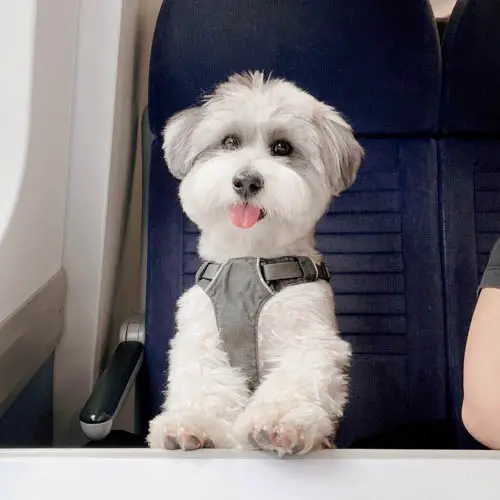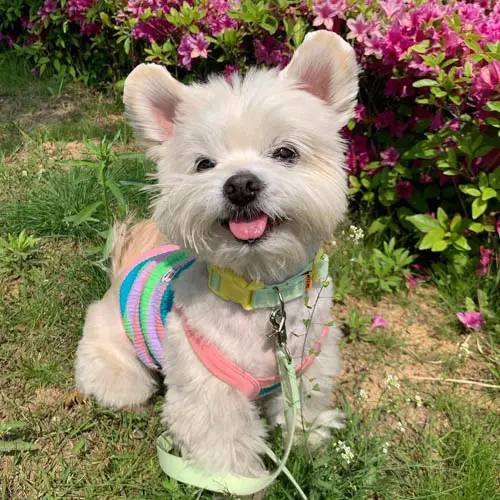The fact is that dogs tend to be naturally inclined towards protecting their owners and living things around them. This is because dog parents always look after their puppies and teach them to be kind and loyal to other animals and humans.
However, many times, an owner’s best friend can become an unwanted pet when it barks or growls at every person who passes by or simply stalks the house every day. That is why people have started to raise guard dogs.
What is a Guard Dog?

Guard dogs are dogs that are trained for security-related purposes, such as crime prevention and deterrence. Guard dogs are commonly employed in the protection of commercial property, military installations, and private homes.
Generally, they are larger than other breeds of dogs but are not typically aggressive by nature. These dogs are often employed for their intimidating appearance rather than their actual skill at deterring intruders.
Guard dogs are trained to protect people. From private residences to national parks, guard dogs protect various people in several different ways.
The American Kennel Club (AKC) categorizes dogs into companion dogs, working dogs, and show dogs. A guard dog falls into the working dog category. Guard dogs are trained to protect people and their property.
The Chosen Breed
A good guard dog is the first line of defense in preventing unauthorized access to your property. They must be trained to be fierce enough to deter intruders but not hurt a human intruder.
The best guard dogs are trained to stay close to you and only attack if someone comes too close. Some owners choose to have their guard dogs wear a protective vest to let further intruders know that there is a dog on the property.
There are many different breeds of dogs that make good guard dogs, but the most common breeds used for home security are
- Doberman Pinschers
- Rottweilers
- German Shepherds
- Bullmastiffs
- Saint Bernards
- Great Danes
These dogs are extremely protective and will attack any intruder who enters the premises they are guarding without warning. Most of the time, this is exactly what is needed. However, if the dog is not trained properly, the results could be fatal.
Guard Dog Training

Everyone wants a guard dog that would defend their home at all costs, but few people know what it takes to train a guard dog. It isn’t something just anyone can do or even something anyone should do.
First, you need to be prepared, and then you need to gather the right tools. You will also need to have lots of patience, as any dog can be taught to be a guard dog. Of course, here are the following steps on how to train a guard dog:
1. Teach your dog basic obedience.
When training a guard dog, it is important to remember that you must be in full control of your dog at all times and that your dog must be trained to react to any command of his master, including those of his master’s voice and gestures.
2. A guard dog should be familiar with the trainer and other members of the family, including other pets.
If the dog is raised with other family members, he will be less likely to bite them. It is recommended that a guard dog should be raised with other pets at the same time to prevent territorialism. If the dog is already trained or is an adult, the dog will need to be trained to live with other pets.
3. Help your dog get familiar with the perimeters of the property.
A dog that is trained to protect a property needs to be familiar with its boundaries. This is one of the steps in training a guard dog. A guard dog should be trained to stay on your property.
When you are taking your dog out for a walk, if he or she is running out onto the street, that is a sign that your dog needs more training.

4. Train the dog to be insensitive/indifferent to overpowering gestures or loud noises.
Its purpose is to ensure that the dog will not overreact when presented with loud noises or overpowering gestures. It is important to make sure that the dog is exposed to loud noises and overpowering gestures to accomplish this.
Your dog may be already afraid of loud noises. You can take advantage of this by creating a situation in which your dog will lose interest in them.
To do this, you will need to begin by creating a situation in which your dog will be concentrating on something else. Then, you will throw a loud noise into the mix.
You will need to be careful about timing since you do not want to frighten the dog. You will want to follow the loud noise with something great immediately.
5. Teach them to bark when someone approaches your property.
A guard dog will bark when someone approaches the house. This is an instinct, and it can be trained out of them.
Train your dog to bark when someone approaches the house and commands to stop, indicating that the person is a friend. Teach your dog that they will get a reward when they alert you to the presence of someone.
6. Teach him indifference towards other animals.
It is a step that is often overlooked or misunderstood, but it’s a significant step to teach among your dogs’ training. Even the fiercest guard dogs need to be trained to remain indifferent to other animals, whether wild or domestic.
Whether you want to train your dog to guard your backyard or your property, it is important to teach it to remain indifferent to other animals that it encounters while doing so.
If you are thinking of training your dog to be a guard dog, it’s best to start as soon as possible. Once the dog and his skills are established, you can ensure that no one has gained access to your premises uninvited.
It is important to note that you should not start training until the dog is at least one year old, but the sooner you start, the better.

Tidbits About Training A Dog
When you think about it, training a guard dog is more than just showing your dog how to protect your home. If you are thinking of getting a dog to guard your home, you should first make sure you have the time, experience, and resources to make it work.
A dog can be an excellent, loving companion, but only if you are willing to commit to the work it takes to raise a dog properly.
Dogs are pack animals and want to please their owners. If you are not able to take on this responsibility, please consider one of the many other types of pets.
Before you invest in a dog and train him to be a guard dog, there are a few things you should know and consider:
- Are you sure you need a dog? If you’re protecting valuable real estate, a guard dog is a sensible choice.
- Before you do anything else, you need to make sure the dog you are getting is right for your household. Think about these things before you commit to getting a dog.
- Think carefully about the kind of dog you want. Do you want a large or small dog? Do you want a dog that is good around people, or just other dogs? Do you want a dog that will bark or growl? Do you want a dog that will bite?
- Different breeds of dogs have different personalities. Some breeds are naturally aggressive and protective, while others are friendly and get along well with strangers.
- Another thing to consider is the cost of training a dog.
- You need to decide whether you will buy a trained dog or get it trained by a professional. Buying a trained dog can be a great idea if you find the right dog and breeder, but it can also be a huge mistake that leads to a lot of trouble and expense.
A dog is a lifelong commitment, and it’s not something you should take lightly. As a dog owner, you want the safety of knowing that your dog is not just going to protect your family but will protect them from every possible scenario that someone could come into your home with bad intentions.
When training your dog, you want to make sure you cover all bases in identifying and fixing any problems you might have with your dog and ensuring that you can control your dog’s behavior.
That means knowing what to do in different situations. For example, if your dog does not like children, you will want to know how to deal with them if they are around your dog.





